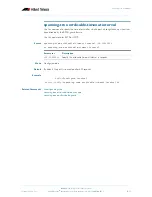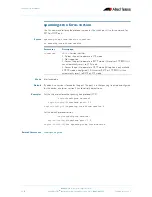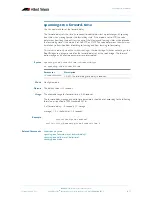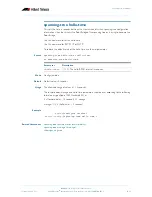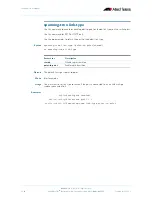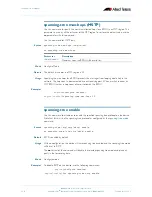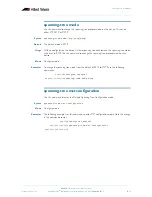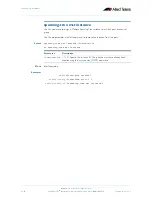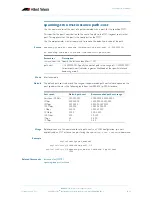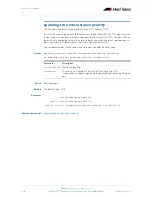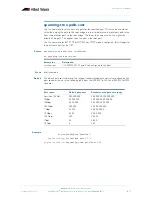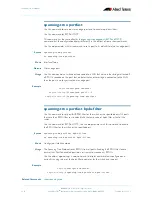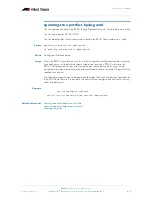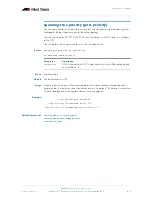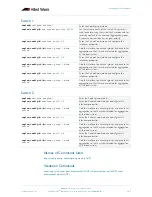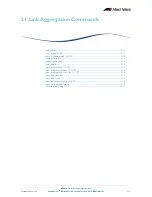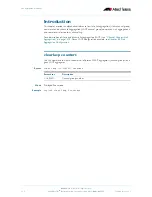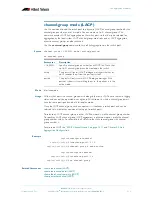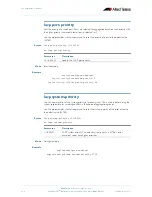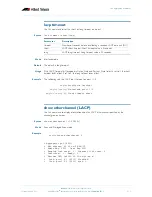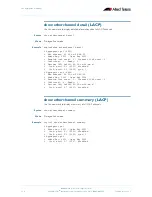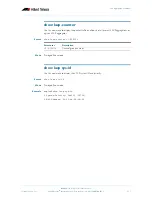
Spanning Tree Commands
©2008 Allied Telesis Inc. All rights reserved.
19.38
AlliedWare Plus
TM
Operating System Software Reference C613-50003-00 REV E
Software Version 5.2.1
spanning-tree portfast
Use this command to set a port as an edge-port and to enable rapid transitions.
Use this command for RSTP or MSTP.
This command has the same effect as the
spanning-tree edgeport (RSTP and MSTP)
command, but the configuration displays differently in the output of some show commands.
Use the
no
parameter with this command to set a port to its default state (not an edge-port).
Syntax
spanning-tree portfast
no spanning-tree portfast
Mode
Interface Mode
Default
Not an edge port.
Usage
Use this command on a switch port connected to a LAN that has no other bridges attached. If
a BPDU is received on the port that indicates that another bridge is connected to the LAN,
then the port is no longer treated as an edge port.
Example
spanning-tree portfast bpdu-filter
Use this command to set portfast BPDU filter for the switch or the specified ports. All ports
that have their BPDU filter set to default take the same value of bpdu-filter as that of the
switch.
Use this command for RSTP or MSTP. Use the
no
parameter with this command to disable
the BPDU filter for the switch or the specified port.
Syntax
spanning-tree portfast bpdu-filter
no spanning-tree portfast bpdu-filter
Mode
Configure or Interface mode
Usage
The Spanning Tree Protocol sends BPDUs from all ports. Enabling the BPDU Filter feature
ensures that PortFast-enabled ports do not transmit or receive any BPDUs.
Use the
show spanning tree
command to display administratively configured and
currently running values of the bpdu-filter parameter for the switch and the port.
Example
Related Commands
show spanning-tree
awplus#
configure terminal
awplus(config)#
interface port1.1.2
awplus(config-if)#
spanning-tree portfast
awplus#
configure terminal
awplus(config)#
spanning-tree portfast bpdu-filter


